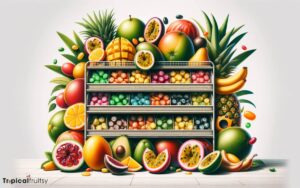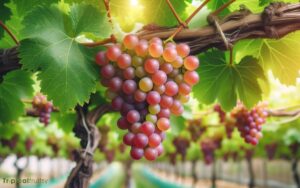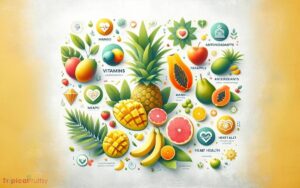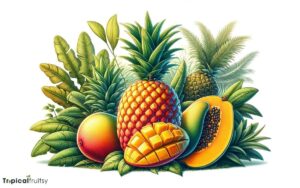What Tropical Fruits Are in Season in Florida? Explained!
In Florida, a variety of tropical fruits reach their peak season at different times of the year. Citrus fruits such as oranges and grapefruits are abundant from fall through spring, while summer heralds the arrival of mangoes.
Avocados can be enjoyed from late spring to early winter, and papayas are available year-round, with their best quality in early summer and fall.
The summer months bring lychees to the forefront, and passion fruits and guavas are best from summer to fall. Starfruit shines from late summer to early spring, offering a refreshing taste.
Florida’s climate is conducive to growing a diverse array of tropical fruits, each with a specific season when they are most flavorful and readily available.
Here’s a brief overview:
Seasonal availability ensures maximum freshness and taste, making Florida an ideal place for fruit enthusiasts. Explore the seasonal delights of Florida’s tropical fruits, from the citrus groves to the mango orchards.
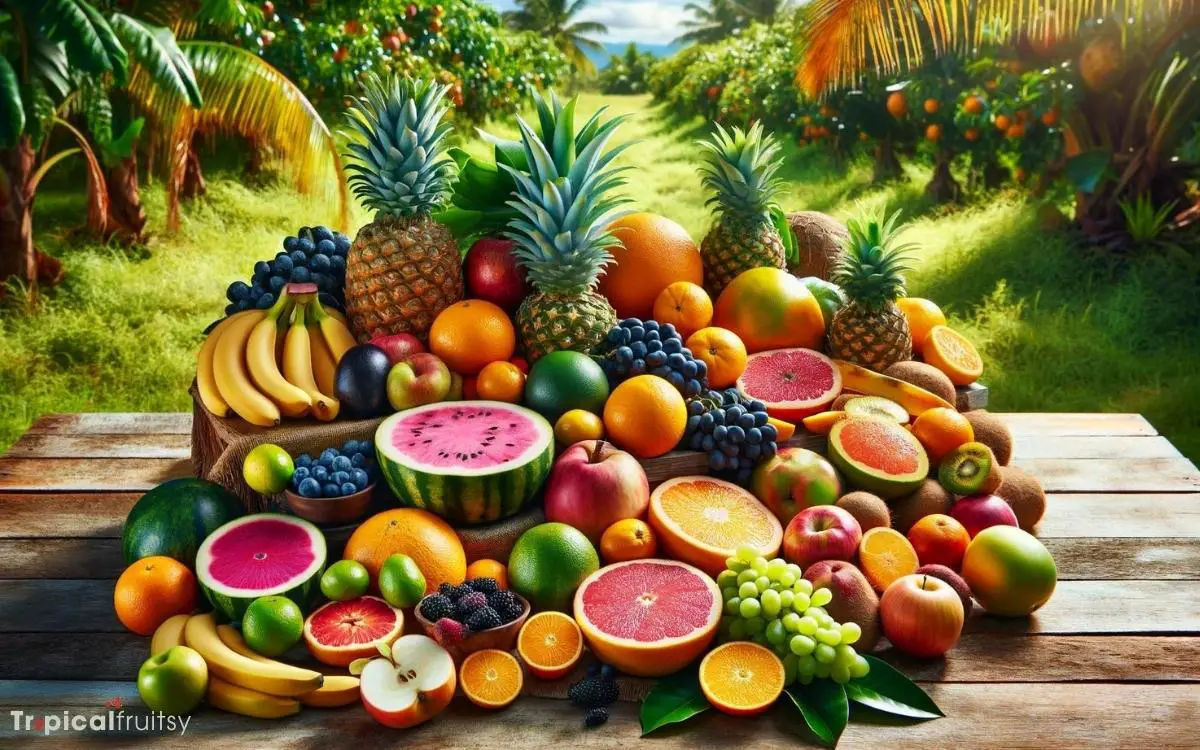
Key Takeaway
Tropical Fruit Seasons and Peak Periods
| Fruit | Season Start | Season End | Peak Periods |
|---|---|---|---|
| Oranges | Fall | Spring | Winter |
| Grapefruits | Fall | Spring | Winter |
| Mangoes | Summer | N/A | Mid-Summer |
| Avocados | Late Spring | Early Winter | Summer to Fall |
| Papayas | Year-round | Year-round | Early Summer, Fall |
| Lychees | Summer | N/A | Early Summer |
| Passion Fruit | Summer | Fall | Late Summer |
| Guavas | Late Summer | Fall | Early Fall |
| Starfruit | Late Summer | Early Spring | Winter |
Florida’s Citrus Season

While most citrus fruits reach their peak from October to June, Florida’s citrus season offers an abundance of varieties including oranges, grapefruits, tangerines, and lemons.
This period is crucial for the agricultural economy, with the state being a leading producer in the United States.
The climatic conditions of Florida’s subtropical environment—characterized by ample sunshine, moderate rainfall, and well-drained sandy soils—are conducive to the cultivation of citrus fruits.
These fruits require a delicate balance of temperatures, as freezing conditions can severely damage the crops.
Commercial growers typically employ advanced agricultural practices to optimize yield and fruit quality, including strategic irrigation, pest management, and selective breeding.
Consumers benefit from the seasonal harvest, enjoying the fruits’ optimal flavor profiles and nutritional content.
Mango Abundance Times

Mangoes, one of the most coveted tropical fruits, reach their peak abundance in Florida during the summer months, typically from June through August.
It is critical for growers to adhere to best practices for harvesting, which include proper timing and handling techniques to ensure the highest quality of fruit.
The convergence of optimal climatic conditions and expert cultivation methods culminates in the availability of superior mango varieties during this period.
Peak Mango Months
In Florida, mangoes reach their peak abundance from May to September, offering a variety of species during these warmer months.
This period marks the optimal time for both commercial harvesting and backyard cultivation to achieve maximum yield and quality.
The climatic conditions, with higher temperatures and adequate rainfall, support the growth and maturation of mango fruits, culminating in an extensive harvest.
Key considerations during the peak mango months include:
- Monitoring for pests and diseases to ensure healthy crops
- Implementing proper irrigation practices to balance the effects of variable rainfall
- Adhering to timely harvesting to capture peak flavor and nutritional value
- Utilizing strategic pruning techniques to maximize fruit production for the subsequent season
- Engaging in post-harvest handling to extend shelf life and maintain fruit quality
Harvesting Best Practices
How can growers ensure the highest quality of mangoes during the peak harvesting months in Florida?
Optimal harvesting practices are critical for maintaining the integrity and flavor of the fruit. It is essential for growers to monitor the maturity and ripeness indicators closely, such as color changes and fruit firmness.
Harvesting should be done during the cooler parts of the day to reduce stress on the plants and to preserve the fruit’s quality.
To facilitate understanding, here is a succinct table delineating key best practices:
| Practice | Description |
|---|---|
| Timing | Harvest in the early morning or late afternoon. |
| Ripeness Assessment | Check for slight softness and color change. |
| Handling | Use gentle techniques to prevent bruising. |
| Post-harvest Care | Cool immediately to extend shelf life. |
| Disease Management | Inspect and sort to prevent the spread of pathogens. |
Adhering strictly to these practices will ensure that mangoes are at their highest quality for both the market and the consumer.
Avocado Harvesting Period
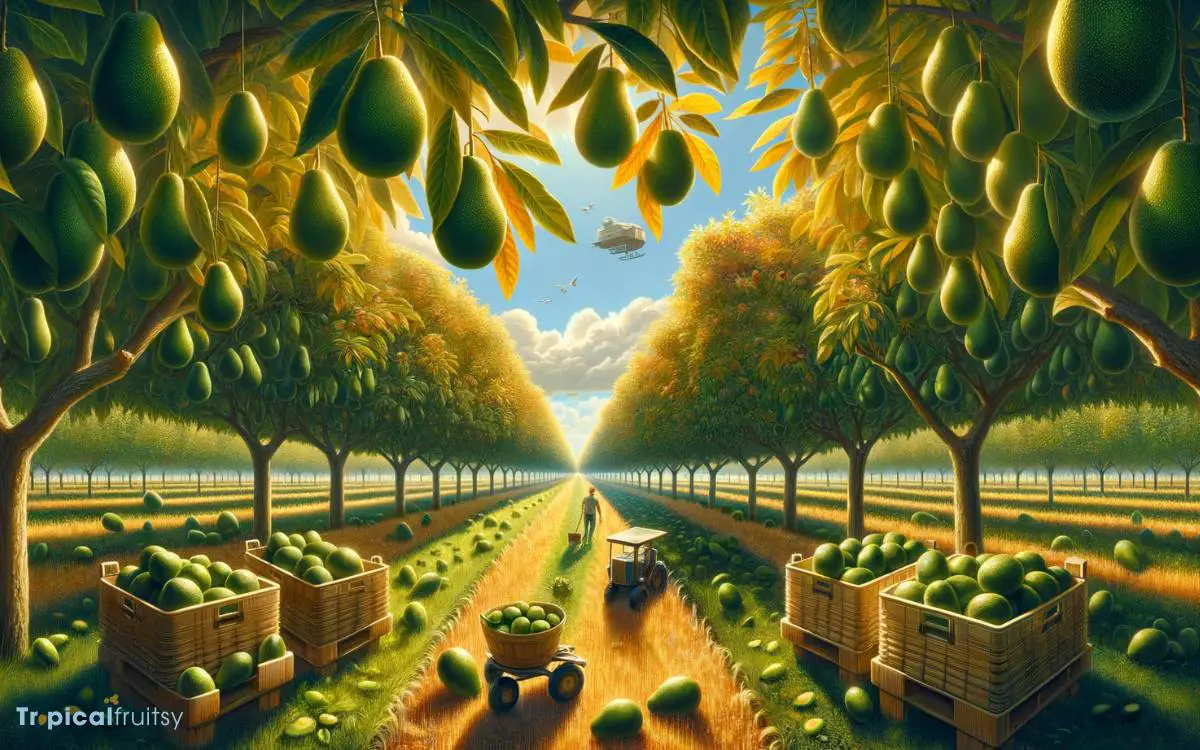
Avocado season in Florida typically kicks off in June and extends through January, offering a lengthy harvesting period for this creamy, nutrient-rich fruit.
The state’s unique climate allows for the growth of both West Indian and Guatemalan varieties, each with their own specific seasonality and characteristics.
During the harvesting period, growers must diligently monitor a range of factors to ensure the avocados reach peak ripeness.
- Climatic Monitoring: Tracking temperature and humidity to predict optimal harvest times.
- Cultivar Selection: Choosing the right variety for the desired harvest window.
- Ripeness Testing: Assessing firmness and oil content to determine maturity.
- Harvesting Techniques: Employing careful methods to prevent bruising and damage.
- Post-Harvest Handling: Ensuring proper storage conditions to maintain fruit quality.
Understanding these elements is crucial for both producers and consumers to enjoy the best quality avocados from Florida’s bountiful groves.
Papaya Peak Months
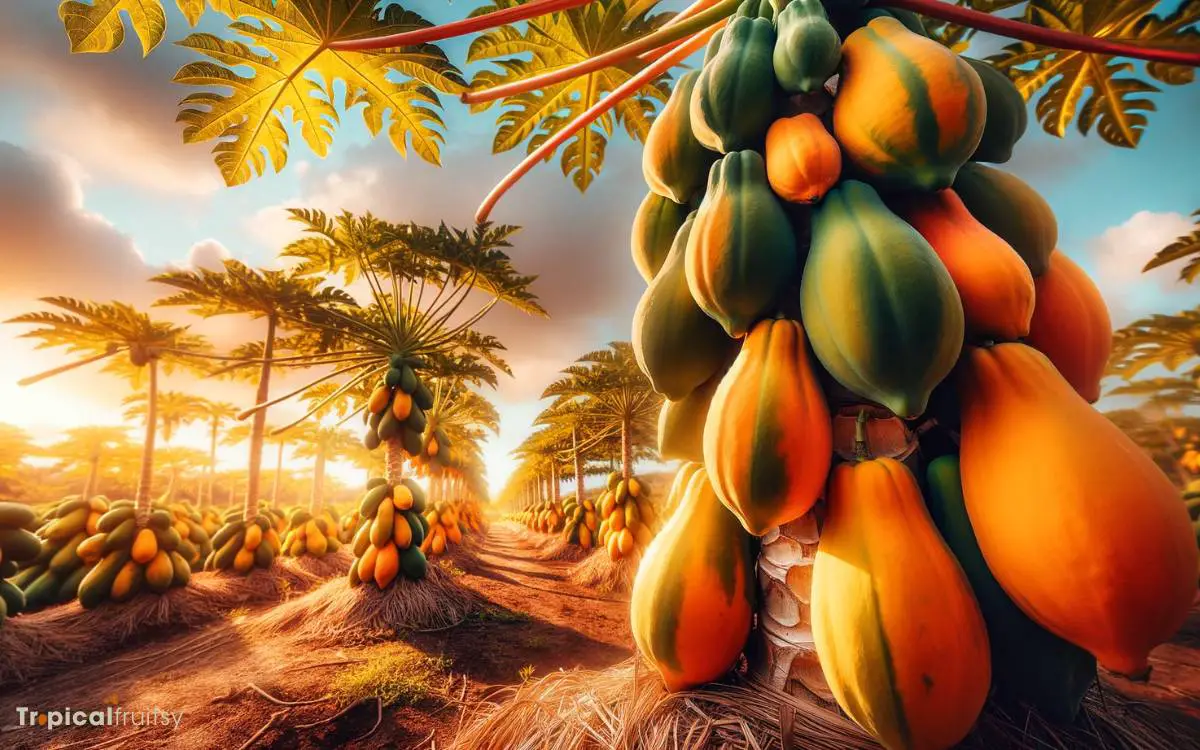
Shifting our focus to another tropical delight, Florida’s papaya season reaches its zenith from May through September, offering a succulent selection of this vitamin-rich fruit.
During these months, the papayas reach their optimal ripeness, characterized by a sweet, butter-like consistency that is both nutritious and delicious.
Consumers and growers alike should be attentive to the peak harvesting times to ensure the best quality and flavor profiles.
To illustrate the papaya lifecycle and optimal consumption period, consider the following table:
| Stage of Development | Optimal Harvest Months |
|---|---|
| Flowering | March – April |
| Fruiting | May – September |
| Ripening | June – August |
This table underscores the critical growth stages of papayas leading up to the prime harvest season, ensuring consumers access the freshest fruit possible.
Lychee Summer Harvest
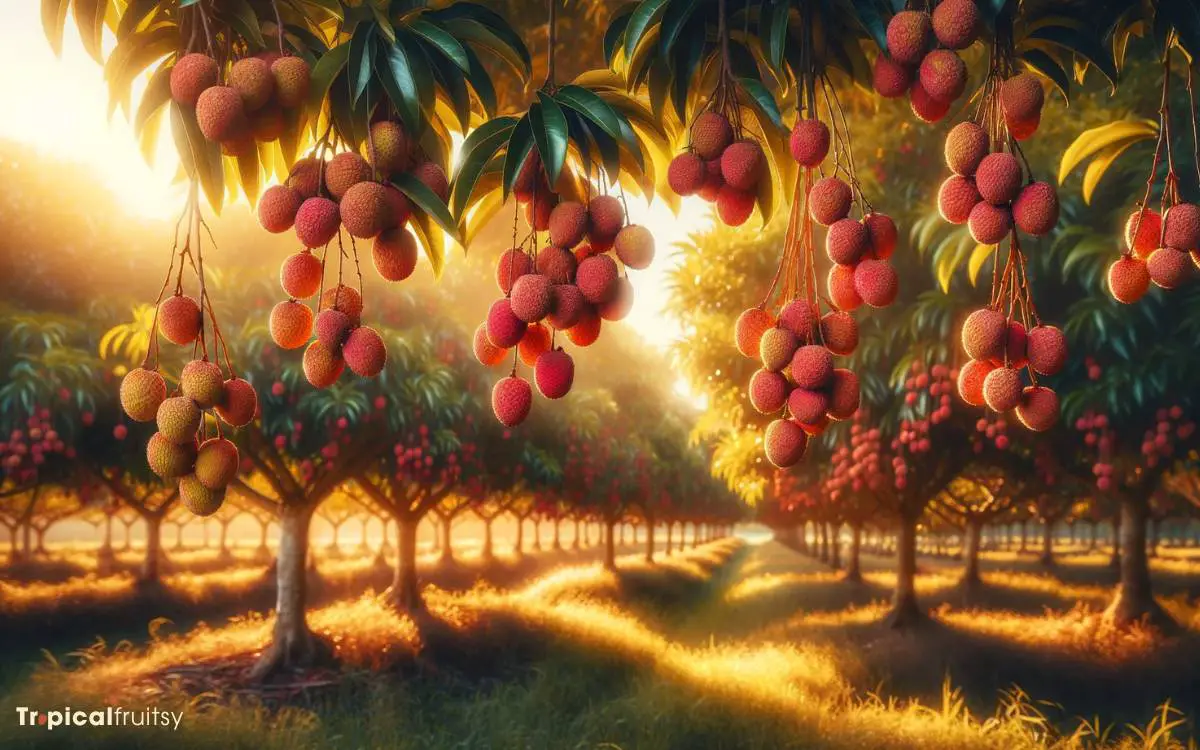
Another tropical fruit that graces Florida with its sweet presence during the summer months is the lychee, with harvest season peaking in June and July.
This small, rounded fruit boasts a rough, reddish-pink skin that encases the translucent white flesh known for its fragrant and sweet flavor.
To ensure optimal taste and freshness, the lychees are carefully harvested by hand, often requiring skilled labor to navigate the tree’s structure and prevent damage to the fruit.
- Lychee trees yield fruit from May to late July.
- Peak harvest time is in June and July.
- The fruit must be picked at the right maturity for optimal sweetness.
- Florida’s climate provides ideal growing conditions for lychees.
- Harvesting lychees involves careful hand-picking to maintain quality.
Lychee growers in Florida adhere to stringent horticultural practices to deliver a superior product that meets the expectations of a discerning market.
Passion Fruit’s Prime

During the late summer and early fall, Florida’s climate becomes the perfect catalyst for the ripening of passion fruit, offering a bounty of the tart and aromatic produce to the local markets.
The subtropical conditions with well-distributed rainfall and high humidity during this period create an ideal environment for Passiflora edulis, commonly known as purple passion fruit, to flourish.
This climacteric fruit, rich in vitamin C and dietary fiber, undergoes a marked increase in respiration rate as it reaches maturity, signaling its prime harvesting time.
Commercial growers and garden enthusiasts alike monitor the deepening purple hue and slight wrinkling of the skin, indicators of peak ripeness and flavor intensity.
Consequently, this period marks a spike in availability and consumption, with passion fruit featuring prominently in Florida’s culinary scene.
Guava Gathering Season
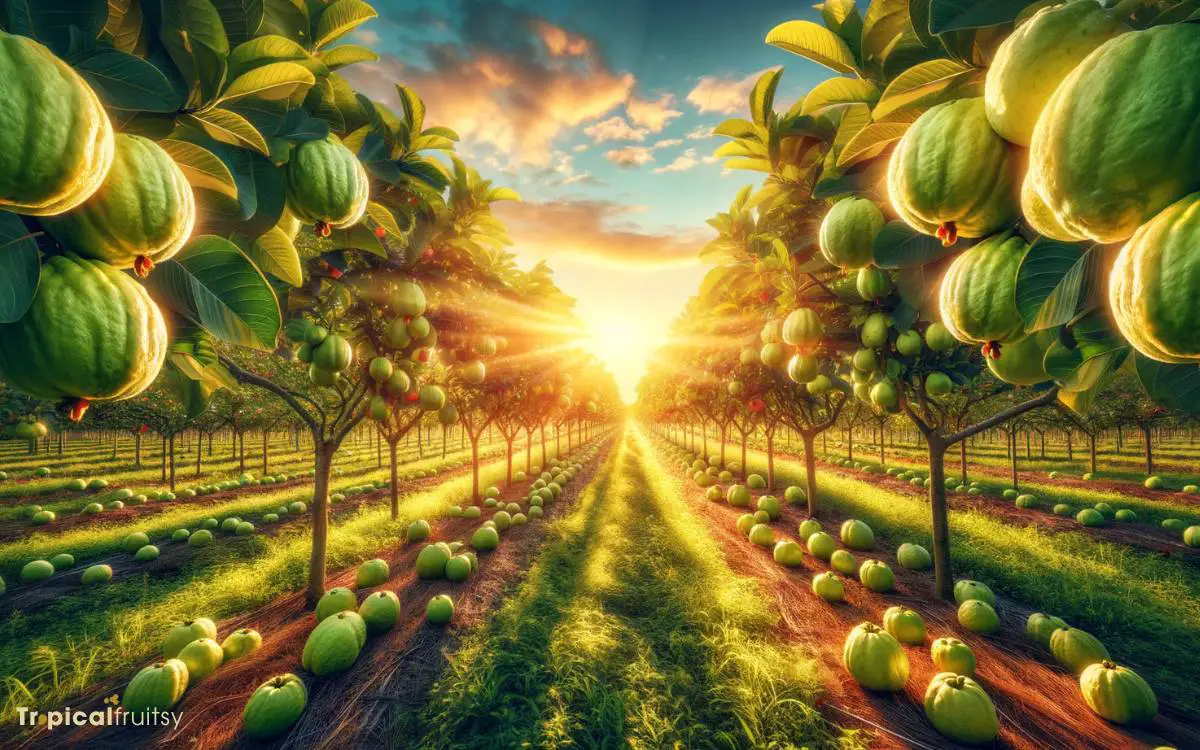
In the heart of Florida’s long summer, typically from June to September, the state’s guava trees yield their fragrant and nutritious fruits, signaling the start of the guava gathering season.
During this period, both commercial growers and backyard enthusiasts are busy harvesting the soft, sweet bounty.
These fruits are a versatile crop, essential to Florida’s agricultural landscape and to those seeking a taste of the tropics.
- Peak Harvesting: Guava fruits reach peak ripeness in these months, ideal for picking.
- Varietal Selection: Several guava varieties are available, each with unique flavors and uses.
- Nutritional Value: Guavas are rich in vitamins C and A, dietary fiber, and antioxidants.
- Culinary Uses: Perfect for jams, jellies, or consuming fresh.
- Agricultural Significance: Contributes to Florida’s economy and agricultural diversity.
Starfruit Sweet Spot

Following the guava season, a plentiful array of starfruit, also known as carambola, begins to adorn Florida’s orchards, typically ripening between June and February.
This period marks the zenith of quality for the tropical fruit, which thrives in the state’s humid subtropical climate.
Starfruit boasts a distinctive ribbed edge that, when sliced, reveals a star-shaped cross-section—a characteristic that is both visually striking and indicative of its ripeness.
Cultivation practices in Florida aim to optimize the balance of sweet and tart flavors inherent in starfruit.
The fruit should be harvested when the ribs start to turn a light yellow, ensuring that the natural sugars have developed adequately while retaining a refreshing crispness.
Proper timing is critical, as starfruit is sensitive to over-ripening, which can lead to a mushy texture and diminished flavor profile.
What Non-Tropical Fruits Can I Find in Florida During the Season?
Florida is known for its abundance of fresh fruits. During the season, you can find a variety of non tropical fruits explained including strawberries, blueberries, peaches, and apples. These fruits thrive in the moderate climate of Florida, making them readily available for locals and visitors to enjoy.
What Tropical Fruits are in Season Now
The availability of tropical fruits can vary depending on your location and the time of year.
However, I can provide a general idea of some tropical fruits that are often in season during different times of the year:
- Mangoes: Mangoes are typically in season during the spring and summer months, with peak availability in the late spring and early summer.
- Pineapples: Pineapples are often in season from late spring through summer, with some availability year-round in certain regions.
- Papayas: Papayas can be found year-round in some tropical regions, but their peak season is usually late summer and early fall.
- Bananas: Bananas are available year-round in most places, but they may have variations in flavor and quality depending on the season.
- Coconuts: Coconuts are available throughout the year, but their availability can vary by region.
- Passion Fruit: Depending on the location, passion fruit can be in season during different times of the year, but it’s often available in late summer and early fall.
- Dragon Fruit: Dragon fruit is typically in season during the summer months.
- Guava: Guavas are available at different times of the year depending on the variety and location. In some places, they are more common in the fall and winter.
- Lychee: Lychees are often in season during the summer months.
- Durian: Durian has a more specific season and is typically available during the summer in tropical regions.
Remember that the exact timing of fruit seasons can vary based on climate, location, and agricultural practices.
To find out which tropical fruits are currently in season in your specific area, it’s a good idea to visit a local farmers’ market or check with local grocery stores.
Conclusion
Florida’s diverse climate allows for a rich tapestry of tropical fruits to flourish, providing a year-round bounty for consumers and significant economic contributions.
The state’s agricultural sector benefits greatly from the seasonal harvests, with one notable statistic being that Florida produces 70% of the United States’ citrus supply, underscoring the importance of understanding and preserving these peak production periods.
The cyclical nature of these harvests not only satisfies consumer demand but also sustains local farming communities.


